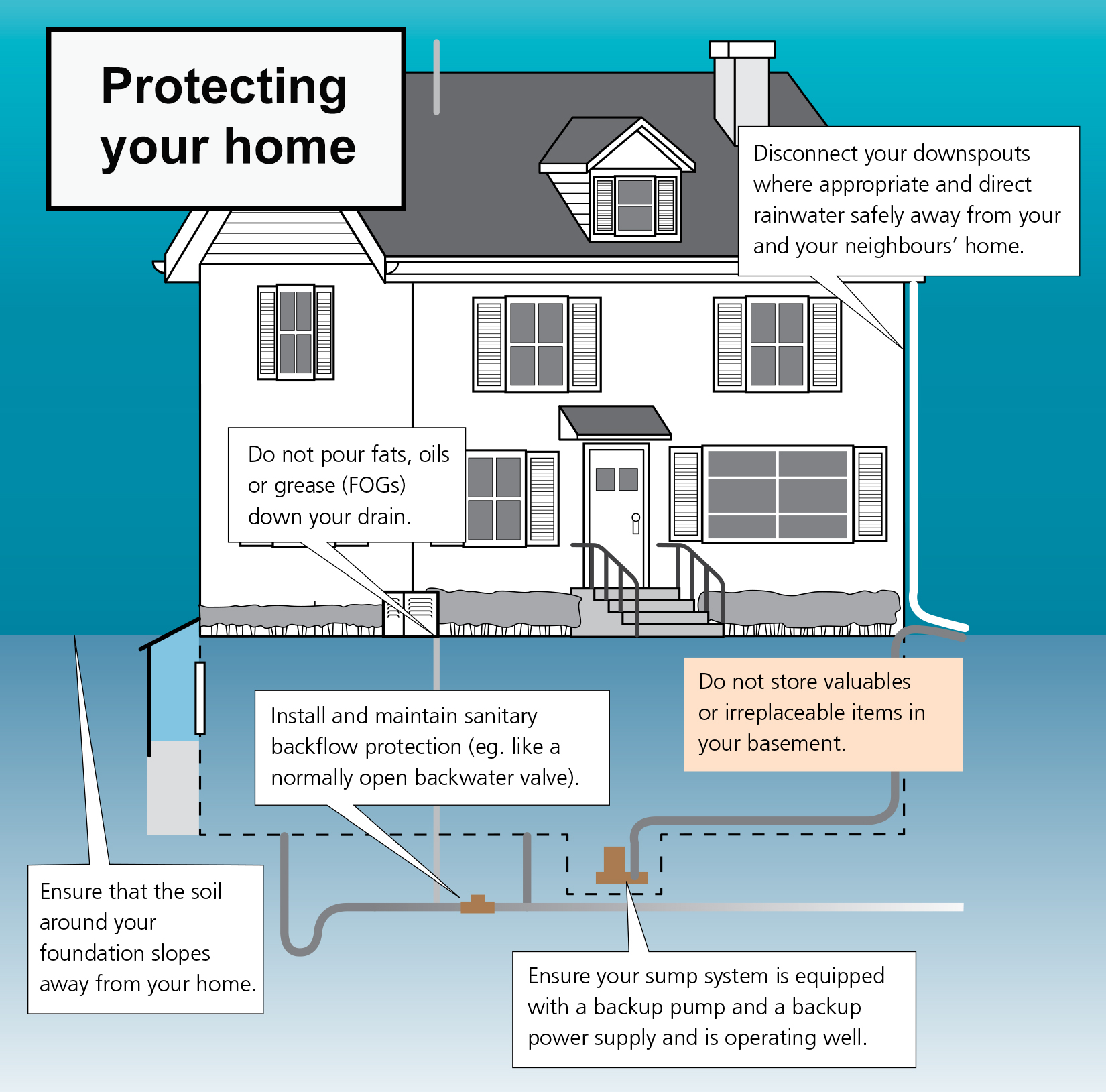Basement Flooding Prevention
Basement Flooding can happen in any home and you can take steps to reduce the risk or prevent it from happening.
Causes of basement flooding
Causes of basement flooding can range from drainage issues to extreme weather events. Here are some common ways that a heavy downpour can make its way into your home:
| Poor lot grading |
| All homes need to have the lot grading slope away from the structure to reduce the risk of basement flooding. If stormwater drains towards your home, it may seep down the foundation wall and gain entry. In fact, improper grading on your property can also negatively impact your neighbour’s property. Visit our Site Alteration page for more information. |
| Poor basement sealing |
| When a home is being built, the basement tiles and foundation need to be sealed properly. If this is not done correctly or deteriorates over time, water can begin to seep into the basement from the ground. |
| Weeping tile failure |
| Every home should have a weeping tile or foundation drain system built around the structure to help ensure that water doesn’t seep into the home. If this system has been installed incorrectly or fails, the basement may experience flooding, especially during heavy rains. |
| Improperly installed downspouts |
|
Your downspout is intended to direct water away from your home and its foundation. Downspouts should be at least 1.5 to 2 metres (5 to 6 feet) away from the basement wall and drain away from the home, usually towards the street or backyard. If your downspouts are broken or missing, water could will pool next to the house where it can seep down the foundation wall and pour in through cracks in the foundation. If downspouts are connected to sewer (sometimes found in older homes), rainwater can contribute to overfilling sewer pipes causing them to backup into homes. If you have downspouts connected to sewer, they should be disconnected for discharge to your property as described above. A video guide is available for reference courtesy of Intact Financial Corporation. |
| Eavestrough debris |
|
Eavestroughs or roof gutters or are essential to moving water away from your home to keep your basement dry. Gutters clogged with leaves, twigs, seed pods and other debris stop water from moving off the roof, through the downspout and away from the home. Overflowing gutters will force water down the sides of the home where it can pool and seep into the basement. |
Protecting your home before extreme weather events
Disasters happen but there are things you can do to reduce the risk that your home will be damaged.

Residential overland flooding is generally not covered by standard property insurance. Talk to your insurer about the types of water damage that are covered by your policy. The Intact Centre for Climate Adaptation is a helpful resource with some cost-effective tips for basement flood protection.
Here are some steps you can take to help reduce or prevent basement flooding from happening:
| Inside your home |
|
| Outside your home |
|
Here are some steps you can take if your basement is flooding:
| What to do if your home is flooding |
|
| What to do after your home floods |
|
Emergency preparedness
Emergencies happen when we don’t expect them. Learn how to be emergency ready, and what to do during and after an emergency by visiting our Emergency Preparedness page.








 Subscribe to this Page
Subscribe to this Page